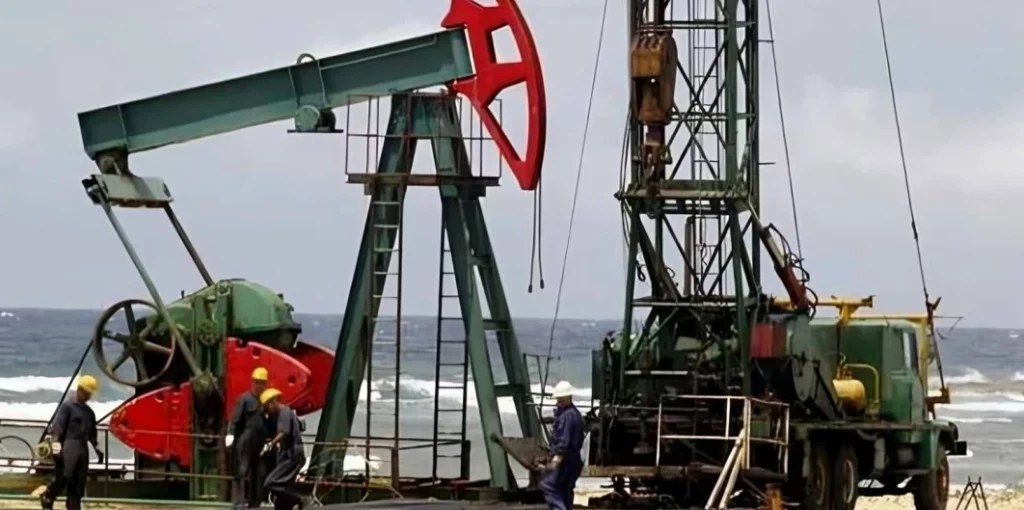The world economy continues to show resentment towards the current circumstances that have been experienced in recent years. According to the latest World Bank report, Developing countries allocated a record US$1.4 billion to payments on their external debt in 2023.
(Read: ‘Our macroeconomic models must be gender sensitive’)
Although one might think that the debts were met, this had a rebound effect on the poorest economies, taking into account that the pressure on them increased due to the withdrawal of private creditors from territories.
In that sense, the report details that not only debt payments increased, but also interest costs, which reached the highest level in the last 20 years. Specifically, this quota increased almost a third until reaching US$406,000 milliona situation that reduced the budgets of several countries for critical areas such as health, education and the environment.
(See more: Colombia is not doing its job well in international trade, according to the World Bank)
“The financial pressure was most intense in the poorest and most vulnerable countries, that is, those that meet the requirements to receive financing from the International Development Association (IDA), an institution that is part of the World Bank.”says the Bank.
Now, in the breakdown of the information it was presented that during 2023 These large economies paid US$96.2 billion to service their debt. Similarly, although capital repayments decreased by about 8%, to US$61.6 billion, interest costs rose to US$34.6 billion during that year alone.
“On average, IDA client countries’ interest payments now equal nearly 6 percent of their export earnings, a level not seen since 1999. In some countries, the share is as high as 38 percent of their export earnings. export“, they say.
(Read also: The World Bank redefines its approach to agribusiness)
External debt
iStock
The situation for the poorest countries did not improve. According to the data, the World Bank and other multilateral institutions became the main source of assistance for this type of economy.
Since 2022, the Bank notes, foreign private creditors have received debt service payments from public sector borrowers in economies eligible for IDA financing. for almost US$13 billion more than what they disbursed in new financing.
(See also: IMF and WB begin their annual meetings: debt, growth and more topics they will discuss)
In addition, the Bank and other multilateral institutions contributed almost US$51 billion more in 2022 and 2023 than they collected in debt service payments. A third of that sum, that is, about US$28.1 billion, corresponded to the World Bank.
According to Indermit Gill, chief economist and senior vice president of the World Bank Group, multilateral institutions have become the last source of vital aid for poor economies struggling to balance debt payments with spending on health, education and other key development priorities.
“In heavily indebted poor countries, multilateral development banks now act as lenders of last resort, a role for which they were not designed. That is a reflection of a flawed financing system: except for funds from the World Bank and other multilateral institutions, money is leaving poor economies when it should be coming in.”, he stated.
(Read: ‘It is not time to analyze problems, but to act’, the call made by the WB)

External debt
iStock
Colombia Case
For the specific case of Colombia, the World Bank presented that during the period analyzed, that is, 2023, The country reached a total external debt of US$197,505 million, which means almost 50% of the national gross domestic product.
(Read more: They ask for greater transparency in the use of green funds)
Now, the factor that has the most weight within the total is the accumulation of long-term external debt that corresponds to US$168,933 millionbut also from official creditors who were recorded at US$37,223 million and private creditors who were estimated at about US$66,227 million.
Reviewing the percentages of public and guaranteed debt during 2023 34% of the resources were from multilaterals, which specifically include a 15% participation from the World Bank and Birf, followed by 11% from the Inter-American Development Bank and 8% from another multilateral.
Likewise, by type of creditor, it was estimated that 61% corresponds to private ones, of which 53% are bondholders. Other commercials were also included and their percentage corresponds to 8%.
(See: Minimum Wage: the countries that have the highest income in Latin America)
Finally, 5% of the debt is with bilaterals, among which are 3% from France, the United States and Germany with 1% for each and others with 0.2%.

External debt
iStock
Medium economies
In this regard, the World Bank highlighted that the covid 19 pandemic increased the debt burden of all developing countries, and subsequent increases in global interest rates have made the economic recovery of several of these nations difficult.
(Read more: Eradicating global poverty would take a little more than a century: here’s why)
At the end of 2023, the total external debt of all low- and middle-income countries amounted to US$8.8 billion, which represents an increase of 8% compared to 2020.
In addition, External loans became more expensive for all developing countries. The interest rates of official creditors doubled to exceed 4%. Those of private creditors rose more than one point and reached 6%, the highest value in 15 years. Since then, global interest rates have begun to fall, although they are expected to remain above the pre-Covid decade average.
(See also: World Bank maintains modest growth projections for Colombia)
Haishan Fu, chief statistician and director of the Development Data Management Group at the World Bank, concluded by stating that “Comprehensive data on government liabilities can facilitate new investment, reduce corruption and prevent costly debt crises“.


















